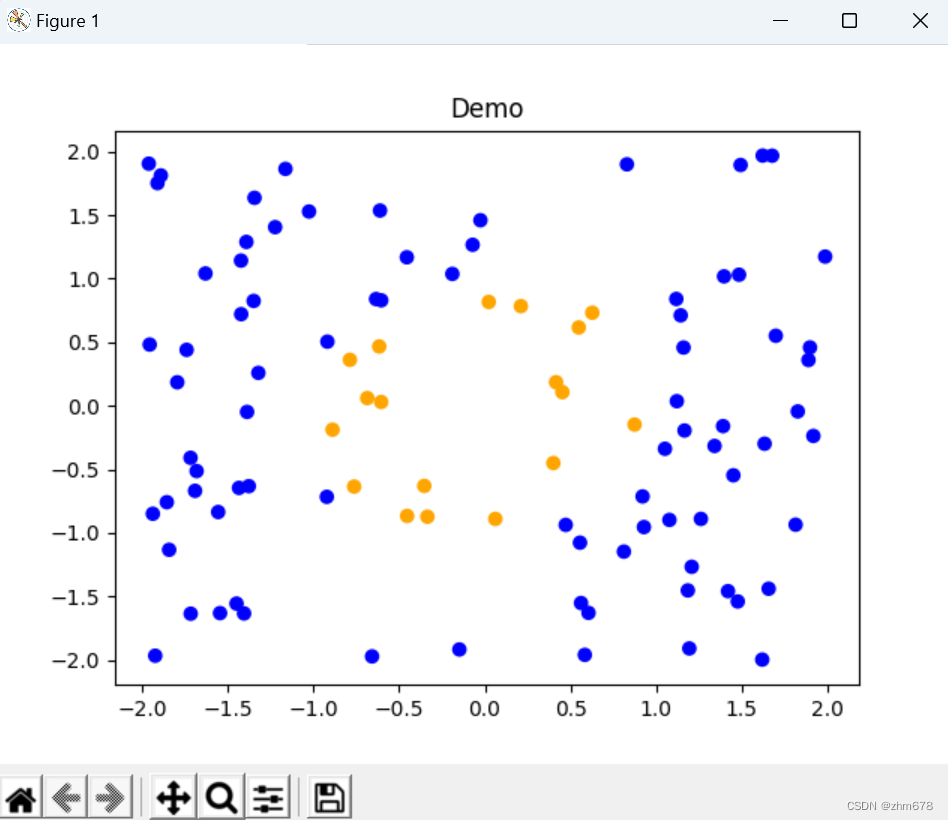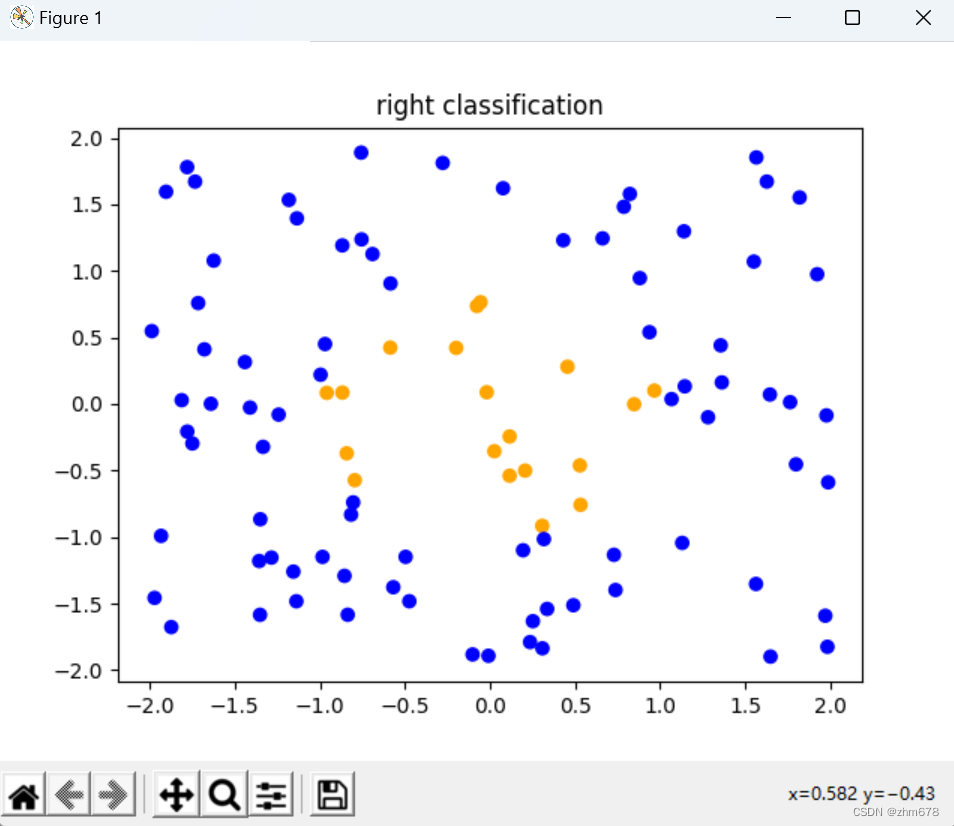1.生成数据与可视化
生成的数据分为单位圆里与单位圆外的数据,单位圆里的数据的标签为0,单位圆外的数据标签为1
import numpy as np
import math
import random
import matplotlib.pyplot as plt
NUM_OF_DATA = 100
def tag_data(x, y):
if x**2 + y**2 < 1:
tag = 0
else:
tag = 1
return tag
def create_data(num_of_data):
data_list = []
for i in range(num_of_data):
x = random.uniform(-2, 2)
y = random.uniform(-2, 2)
tag = tag_data(x, y)
data = [x, y, tag]
data_list.append(data)
return np.array(data_list)
#-------------------可视化--------------
def plot_data(data, title):
color = []
for i in data[:, 2]:
if i == 0:
color.append("orange")
else:
color.append("blue")
plt.scatter(data[:, 0], data[:, 1], c=color)
plt.title(title)
plt.show()
# ------------------------------------
if __name__ == "__main__":
data = create_data(NUM_OF_DATA)
print(data)
plot_data(data, "Demo")
2.调用数据进行推理
import numpy as np
import create_data as cd
def activation_relu(input):
return np.maximum(0, input)
def activation_softmax(input):
max_values = np.max(input, axis=1, keepdims=True)# 取每一行的最大值并返回一个长度为样本量的向量
slide_inputs = input - max_values# input的每一个数减去每一行的最大值后最大值为0,其余为负数,指数函数的性质即横坐标距离相同,数值比值不变,有利于防止指数爆炸
exp_values = np.exp(slide_inputs)
exp_sums = np.sum(exp_values, axis=1, keepdims=True)
return exp_values / exp_sums# 每一行每一个数在整行的概率
# print(activation_softmax(inputs))
# 将数据进行标准化,避免梯度爆炸或梯度消失
def normalize(array):
max_number = np.max(np.absolute(array), axis=1, keepdims=True)
scale_rate = np.where(max_number == 0, 1, 1/max_number)
norm = array * scale_rate
return norm
def classify(probabilities):
classification = np.rint(probabilities[:, 1])
return classification
class Layer():
def __init__(self, n_inputs, n_neurons):
self.weights = np.random.randn(n_inputs, n_neurons)
self.biases = np.random.randn(n_neurons)
def layer_forward(self, inputs):
output = np.dot(inputs, self.weights) + self.biases
# output = activation_relu(sum1)
return output
class Net():
def __init__(self, Net_shape):
self.shape = Net_shape
self.layers = []
for i in range(len(self.shape)-1):
layer = Layer(self.shape[i], self.shape[i+1])
self.layers.append(layer)
def net_forward(self, inputs):
outputs = [inputs]
for i in range(len(self.layers)):
if(i < len(self.layers) - 1):
output = activation_relu(self.layers[i].layer_forward(outputs[i]))
print(output)
output = normalize(output)
print(output)
else:
output = activation_softmax(self.layers[i].layer_forward(outputs[i]))
outputs.append(output)
print(outputs)
return(outputs)
data = cd.create_data(100)
print(data)
cd.plot_data(data, "right classification")
inputs = data[:,(0, 1)]
net1_shape = [2, 4, 5, 2]
net1 = Net(net1_shape)
outputs = net1.net_forward(inputs)
classfication = classify(outputs[-1])
print(classfication)
data[:, 2] = classfication
print(data)
cd.plot_data(data, "before training") 























 730
730











 被折叠的 条评论
为什么被折叠?
被折叠的 条评论
为什么被折叠?










